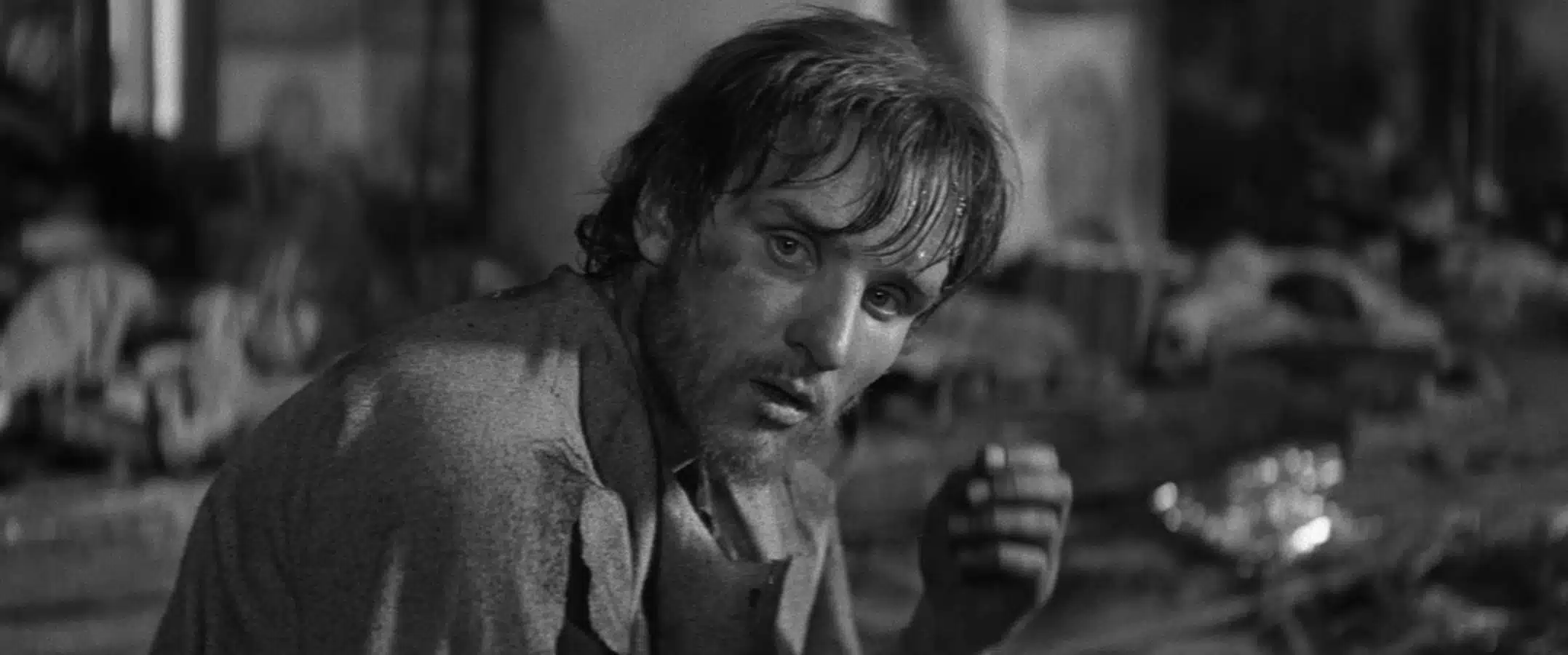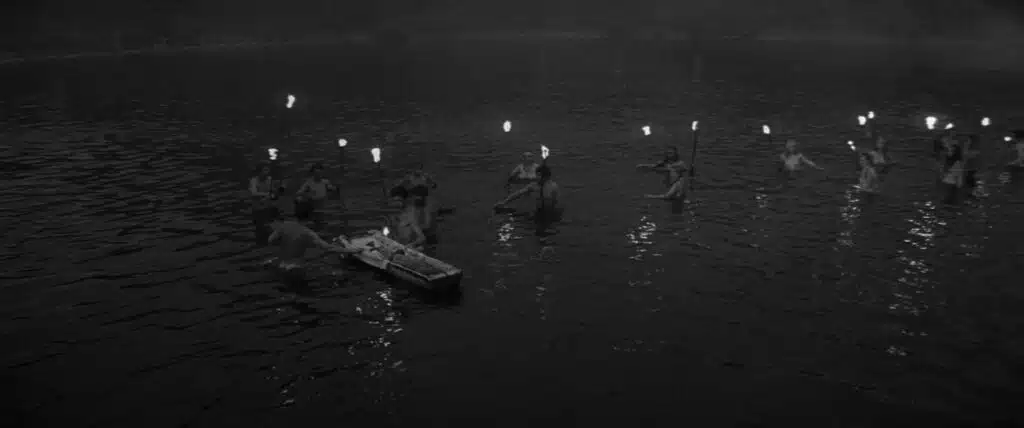A film about an icon maker called Andrei made by a film maker called Andrei. Any read across from 15th century painter Andrei Rublev to 20th century auteur Andrei Tarkovsky is entirely deliberate, though the surprise of watching what’s often described as Tarkovsky’s master work is how little Andrei Rublev actually features in it.
He’s the bystander, the observer, in his own story, which is actually more the story of the times Rublev lived in, as recreated by Tarkovksy in, remarkably, only his second film. How at this stage in his career Tarkovsky got the funding from an avowedly anti-God communist regime to make a film about a man of God is one of life’s great mysteries.
Tarkovsky was making Andrei Rublev about seven years after Bergman’s The Seventh Seal and a year or so after Pasolini’s The Gospel According to St Matthew and he borrows from both – the episodic, philisophical structure from Bergman, the ravaged pre-Modern authenticity from Pasolini.
In clearly defined chapters, what slender plot there is follows Rublev on his travels through Russia, from one icon-painting gig to another, picking up and losing people en route, running into a fellow icon painter called Theophanes, a jester entertaining villagers, a group of pagans frolicking naked by a river, landowners killing or blinding the builders/painters whose work they found unsatisfactory (the ultimate bad review), and a group of Tatars on the warpath.
Rublev’s faith is at the heart of it and there’s a relentless rejection of materialism (which might explain the funding) – “Only by prayer can the soul transcend the flesh,” says Rublev at one point. Even so, he is tested, and like Christ in the desert, Rublev eventually begins to interrogate his own faith.
As he spins his stories, Tarkovsky delivers a 360-degree view of Russia in the early 1400s, gradually picking up a head of narrative steam. By the time he gets to the Tatars sequence all the elements of the proper war movie are in play – horses galloping, battering rams, buildings burning, rape and pillage, extras used on a huge scale. By the final chapter, The Bell, Tarkovsky is delivering a complete self-contained story, with beginning, middle and end, focused on a fleshed-out character and with enough jeopardy to satisfy even the most exacting anti-arthouse Hollywood devotee.
There’s a prologue, featuring a man trying to soar away in a hot-air balloon (artistic creativity unbound!) and an epilogue, when Tarkovsky shifts suddenly from black and white to colour for close-ups of the surviving work of Rublev, richly coloured icons photographed in sharp detail.
Between these bookends the tone is epic – self-consciously so – with Tarkovsky shooting without tricks (which would date it), in long, static, carefully framed compositions, the image (by DP Vadim Yusov) falling off towards the edge of the frame, as if we’re peering into history. Meanwhile Vyacheslav Ovchinnikov’s score regularly gives us choirs and bells, or music summoning the effect of choirs and bells, Russia constantly evoked.
Rublev (Anatoliy Solonitsyn) is philosophical, meek, wise, unworldly, and moves from one situation to the next, always on the periphery, with Theophanes (Nikolay Sergeev) acting as a kind of John the Baptist figure to Rublev’s Christ at the outset, a John of Revelations figure when he re-appears towards the end.
The icon painter as truth-teller, prophet and seer in his time, the artist as the same in the modern era, Tarkovsky is not being coy in his intentions, but then high seriousness was still alive when Andrei Rublev was being made. Postmodernity had not yet smothered it.
The film is not as long as Tarkovsky initially intended it, though only about ten minutes or so have been lost in the most available version, which comes in at three hours and three minutes, and which Tarkovsky himself eventually admitted was his favourite version (and is the one linked to below).
Andrei Rublev – watch it/buy it at Amazon
I am an Amazon affiliate


